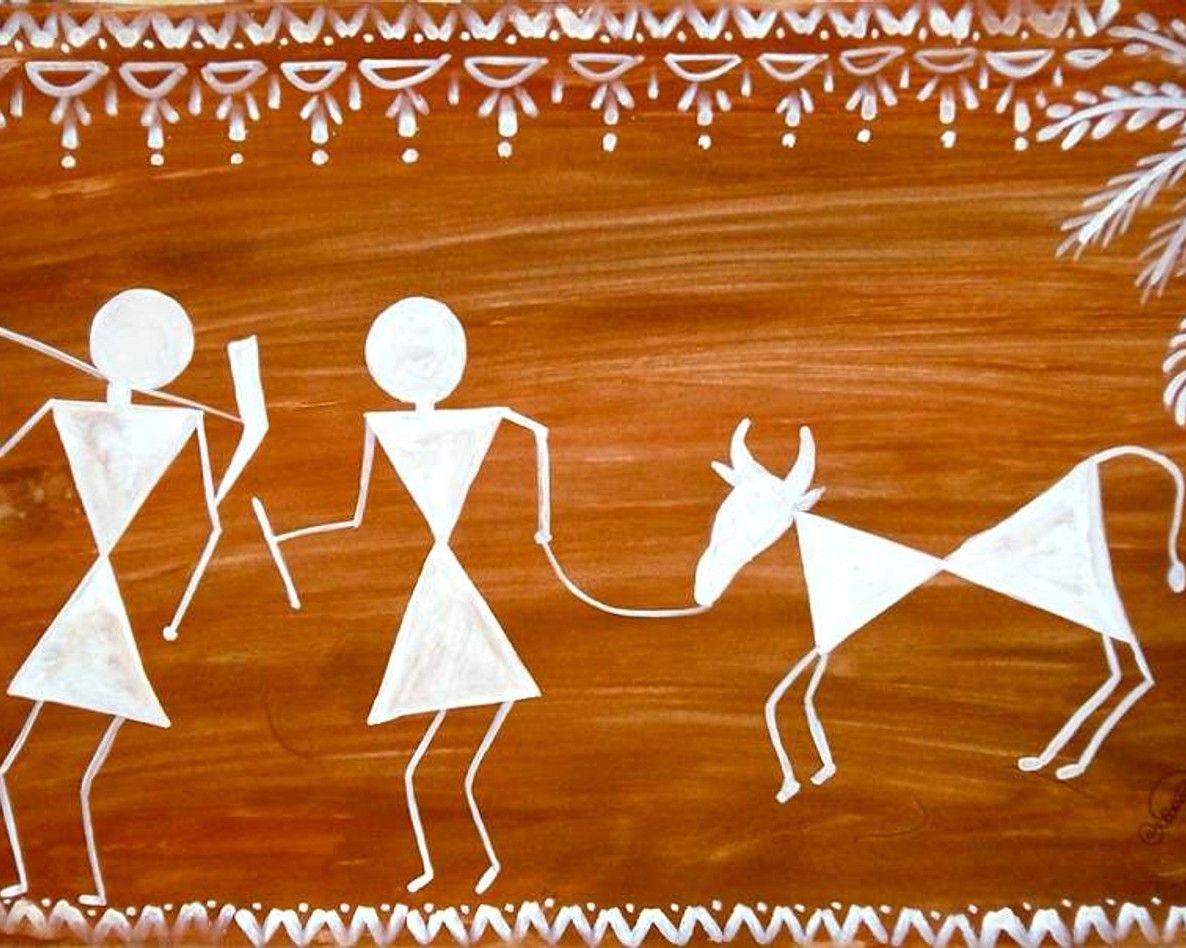Warli Art: A Journey into the Heart of Tribal Culture

Have you ever seen paintings made with just white shapes on a brown background? That’s Warli art, a very old and special painting style from India! It is made by the Warli tribe in Maharashtra. These paintings may look simple, but they tell wonderful stories about nature, animals, and people.
Warli art is one of the oldest tribal art forms in India, but even today, many people love it and use it in modern designs. Let’s learn about this amazing art!
Where Did Warli Art Come From?
Warli art started more than 2,500 years ago in the villages of Maharashtra. The Warli tribe, a group of people who live close to nature, created this art to decorate their mud huts during festivals and celebrations.
At first, only women painted Warli art on the walls of their homes. They used white paint made from rice paste and drew on mud-colored walls. The paintings were used to celebrate weddings, harvests, and festivals. Over time, men also started painting, and today, Warli art is famous all over the world!
How is Warli Art Made?
Warli paintings are different from other Indian folk arts because they use only a few colors and simple shapes. Here’s how they are made:
1. The Background
In old times, Warli paintings were made on mud walls. Now, they are done on paper, cloth, and canvas with a brown or earthy-colored background.
2. The Paint
Warli artists use white paint, which was originally made from rice paste. Today, artists use white paint or chalk to draw on darker surfaces.
3. The Shapes
Warli paintings use only simple shapes:
- Circles – Represent the sun and moon.
- Triangles – Represent mountains and trees.
- Squares – Represent homes or sacred places.
- Lines and dots – Used to add details and patterns.
The figures in Warli art look like stick people. They are made with two triangles joined at the tip and a circle for the head. This makes them look simple but lively!
What Do Warli Paintings Show?
Warli paintings tell stories about daily life and nature. Some common themes are:
- Farming and Harvesting – People working in the fields, planting, and celebrating a good harvest.
- Dancing and Festivals – Warli people love music and dance, and their famous Tarpa dance is often shown in paintings.
- Animals and Birds – Tigers, cows, deer, and birds are drawn to show harmony with nature.
- Marriage and Family Life – Warli paintings often show wedding ceremonies and family gatherings.
- Hunting and Fishing – Since the Warli tribe depends on nature, their art also shows hunting, fishing, and collecting food.
One special feature of Warli art is that it shows movement—the people, animals, and trees in the painting look like they are dancing or celebrating!
How Warli Art Became Famous
For a long time, Warli paintings were only made on walls in villages. But in the 1970s, an artist named Jivya Soma Mashe started painting Warli art on paper and cloth. His work became popular, and soon, people all over India and the world started recognizing Warli art.
Today, Warli paintings are seen in homes, offices, museums, and even fashion!
Warli Art in Today’s World
Even though Warli art is very old, it is used in many modern ways, such as:
- Home decor – Wall paintings, cushion covers, and bedsheets.
- Clothing and Accessories – Sarees, t-shirts, handbags, and jewelry.
- Eco-friendly products – Handmade notebooks, greeting cards, and gift bags.
Many artists also use Warli paintings to spread messages about saving nature, education, and social change.
Why is Warli Art Special?
Warli art is special because it is simple yet meaningful. It teaches us that:
- Art does not need to be complicated – Even simple shapes can create beautiful stories.
- Nature is important – Warli art shows how humans, animals, and plants live together.
- Traditions should be preserved – Even though Warli art is ancient, it is still loved today!
Warli art is a magical way of storytelling through simple drawings. From the walls of villages to modern homes and fashion, this art form has traveled a long way.
Wouldn’t it be fun to try making your own Warli painting? All you need is paper, a brown background, and white paint—and you can create your own Warli story!